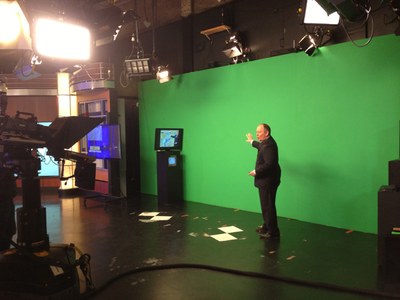
Purchase Tickets
Waiting, Wondering and Worrying About the Weather
March 1, 2013

Each year, as I prepare for my family?s annual summer
trip to Michigan, I pull up the 10-day extended forecast. Without it, I am
powerless to pack, as the temperature can fluctuate more than 40 degrees from
year to year. If it looks like a lot of rain is heading that way, we might even
adjust our travel dates in an effort to enjoy sunnier skies.
While modern weather monitoring and tracking have been
beneficial to me on things like this, today?s ability to predict the arrival of
severe weather has helped people prepare for (or even flee) catastrophes and
saved countless lives. Unfortunately for Hoosiers from a century ago, they
couldn?t flip on a television set to get the latest, breaking coverage as
events of the Great Flood of 1913 began to unfold. But what if they could have?
To arm our guests with some background and perspective
that will help them maximize their experience in our upcoming You Are There
1913: A City Under Water, we teamed up with our friends at WISH-TV 8 to create
an imagined but fact-inspired newscast for March 25, 1913 when the waters were
rising in Indianapolis, but the levees had not yet broken.
The report features Daybreak anchor Scott Sander relating
local and regional news and a report from chief meteorologist Steve Bray about
what weather has contributed to the current situation as well as what is
still on the way. Guests can even catch a phone-in, eyewitness account of the
rising waters from 10-year-old Indianapolis resident Adeline Claghorn (voiced
by Emma Hermacinski, daughter of WISH-TV reporter Jay Hermacinski).
It?s hard to imagine how modern meteorology would have
changed the lives of the characters you?ll meet when you step back in time to
the Wulf?s Hall relief station on March 31, 1913. Even so, I think you?ll be
inspired by the way Hoosiers were able to band together to help one another in
the wake of disaster. I hope you?ll visit us when A City Under Water opens on
March 26!
___________________________________








